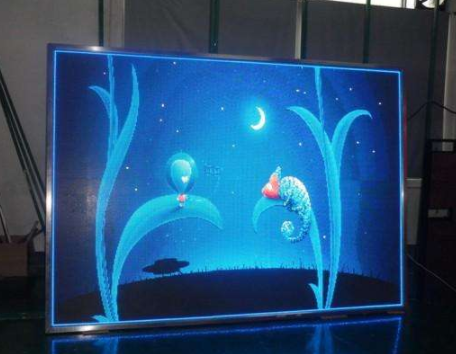Indoor LED display, the surface-mounted SMD display currently in the market has become a mainstream mature product, of which small pitch is widely used in conference rooms, courts, public security bureaus, procuratorates, command centers, television stations, etc., meanwhile, channel sales methods have been Widely distributed in shopping malls, restaurants, schools, public buildings and other places.
For general indoor LED display, when the product is delivered, it is in a state of zero failure at the factory. However, after a period of use, bad lights and column lights will occur, and there will be lights that are dropped due to accidental collision. In the on-site environment, unpredictable or unsatisfactory scenes sometimes appear. For example, the temperature difference of the air conditioner's air outlet blowing at a close distance causes a large area of bad points, or the on-site environment is too humid, which causes the screen body to be damaged The point rate is increasing every day.

▲ Figure 1. Bad short-circuit and column-lighting phenomenon of LED display
Therefore, in order to effectively solve the mentioned problems, so-called surface coating solutions have been produced.
This solution is based on the current indoor surface-mount LED display. The equipment can be directly combined with the existing SMT surface-mount production line, as shown in Figure 2.

▲ Figure 2. Schematic diagram of surface coating equipment (light surface)
The process is to light the board made by the (SMT) surface mount process. After 72 hours of aging, the surface of the lamp board is covered with a film to form a so-called protective layer. The conductive pins can be wrapped and isolated. The influence of humidity and water vapor, as shown in Figure 3.
For LED display products with a general protection level of IP40 (IPXX, front X dustproof, rear X waterproof), it has the technology to effectively improve the protection level of the LED light surface, provide anti-bumping effects, avoid the situation of falling lights, and reduce the whole screen's dead pixels. Such advantages as PPM, this type of solution currently corresponds to market demand, production is mature, and it will not excessively increase the overall cost burden.

▲ Figure 3. Schematic diagram of the surface coating process
Not only that, the protection process on the back of the printed circuit board (PCB) maintains the three-proof paint protection process used in the past (see Figure 4). Generally, the protection level on the back of the circuit board can be improved by spraying. The surface (IC) is coated with a film to form a protective layer to avoid failure of integrated circuit components of the driving circuit.

▲ Figure 4. Schematic diagram of surface coating equipment (IC surface)
For LED display modules used indoors, such a solution can effectively prevent problems such as failure points caused by moisture and dust from moisture by covering the exposed electrical conductive pins, while providing protection. The impact of the impact, the current surface coating solutions on the market are GOB display, AOB display, etc. Table 1 is a comparison with the general SMD display.
Compared with ordinary SMD display

















 RCCN WeChat QrCode
RCCN WeChat QrCode Mobile WebSite
Mobile WebSite
